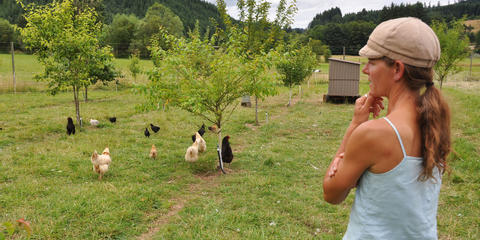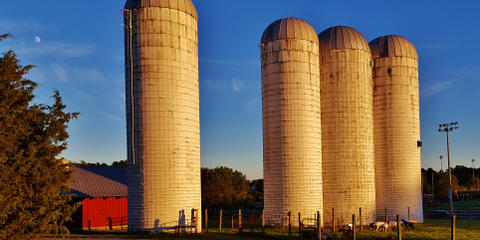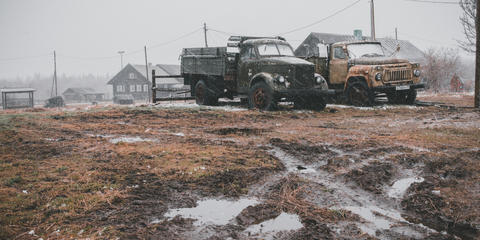Federal funding programs are under review as of 1/27/25. We'll make updates as new info is released.
Our sources indicate that this program is closed indefinitely and unlikely to reopen.
ERP covers losses to crops, trees, bushes and vines due to a qualifying natural disaster event in calendar years 2020 and 2021. For impacted producers, FSA will be administering emergency relief to row crop and specialty crop producers through the following two-phased process:
Phase 1 will leverage existing Federal Crop Insurance or Noninsured Crop Disaster Assistance Program (NAP) data as the basis for calculating initial payments.
Phase 2 will be intended to fill additional assistance gaps and cover eligible producers who did not participate in existing risk management programs.
This two-phased approach enables USDA to streamline the application process to reduce the burden on producers, proactively include underserved producers who have been left out of past relief efforts and encourage participation in existing risk management tools that can help producers handle future extreme weather events.
Eligibility
ERP Phase 2
ERP covers losses to crops, trees, bushes and vines due to a qualifying natural disaster event in calendar years 2020 and 2021. Eligible crops include all crops for which federal crop insurance or NAP coverage was available except for crops intended for grazing. Qualifying natural disaster events include wildfires, hurricanes, floods, derechos, excessive heat, winter storms, freeze (including a polar vortex), smoke exposure, excessive moisture, qualifying drought, and related conditions.
For ERP eligibility, “related conditions” are damaging weather and adverse natural occurrences that occurred concurrently with and as a direct result of a specified qualifying disaster event. They include:
Excessive wind that occurred as a direct result of a derecho;
Silt and debris that occurred as a direct result of flooding;
Excessive wind, storm surges, tornados, tropical storms, and tropical depressions that occurred as a direct result of a hurricane; and
Excessive wind and blizzards that occurred as a direct result of a winter storm.
For drought, ERP assistance is available if any area within the county in which the loss occurred was rated by the U.S. Drought Monitor as having a D2 (severe drought) for eight consecutive weeks or D3 (extreme drought) or higher level of drought intensity.
2020 drought counties eligible for ERP
2021 drought counties eligible for ERP
ERP Phase 1 (Now closed)
Eligible crops include all crops for which federal crop insurance or NAP coverage was available and a crop insurance indemnity or NAP payment was received, except for crops intended for grazing. Qualifying natural disaster events include wildfires, hurricanes, floods, derechos, excessive heat, winter storms, freeze (including a polar vortex), smoke exposure, excessive moisture, qualifying drought, and related conditions.
For ERP eligibility, “related conditions” are damaging weather and adverse natural occurrences that occurred concurrently with and as a direct result of a specified qualifying disaster event. They include:
Excessive wind that occurred as a direct result of a derecho;
Silt and debris that occurred as a direct result of flooding;
Excessive wind, storm surges, tornados, tropical storms, and tropical depressions that occurred as a direct result of a hurricane; and
Excessive wind and blizzards that occurred as a direct result of a winter storm.
For drought, ERP assistance is available if any area within the county in which the loss occurred was rated by the U.S. Drought Monitor as having a drought intensity of:
D2 (severe drought) for eight consecutive weeks; or
D3 (extreme drought) or higher level of drought intensity.
Terms
All producers who receive ERP Phase 2 payments must purchase crop insurance, or NAP coverage where crop insurance is not available, in the next two available crop years as determined by the Secretary. Purchased coverage must be at 60/100 level of coverage or higher for insured crops, or at the catastrophic coverage level or higher for NAP crops.
Application Instructions
Contact your local FSA service center to get submit your application.
Forms
Resources
Related Programs

Direct Farm Operating Loan
Farm Service Agency
- Loan
- General
- Equipment
- Animal Purchase
- Diversification
- Marketing
- Processing
- Feed
- Seed
- Fertilizer
- Cash Rent
- Housing
- Construction
- Infrastructure
- Repairs
- Pest Management
- Storage
- Legal & Finance
- Water Management
- Waterway Protection
- Water Quality
- Conservation
- Training
- Immigrants
- CSA
- Refinancing
- Reduced Tillage
- National
- Any

Environmental Quality Incentives Program (EQIP)
Natural Resources Conservation Service
- Grant
- Cost Share
- Conservation
- Cover Crops
- Forest Management
- Certified Grassfed
- Irrigation
- High Tunnel
- Certified Organic
- Air Quality
- Alternative Energy
- Soil Health
- Wildlife & Pollinator Habitat
- Water Quality
- Weather
- Research
- Landscape
- Precision Ag
- Drought
- Nutrient Management
- Carbon Capture
- Fencing
- Agroforestry
- Grazing Management
- Reduced Inputs
- National
- Any

Farm Storage Facility Loan Program (FSFL)
Farm Service Agency
- Loan
- Infrastructure
- Equipment
- Storage
- Lighting
- Delivery Vehicle
- National
- Oilseeds
- Peanuts
- Pulse Crops
- Hay
- Honey
- Biomass
- Fruits
- Vegetables
- Floriculture
- Hops
- Maple Sap
- Milk
- Cheese
- Yogurt
- Butter
- Eggs
- Rye
- Aquaculture
- Poultry
- Livestock
- Grains

Inflation Reduction Act Assistance for Distressed Borrowers
Farm Service Agency · Closed Indefinitely
- Grant
- Discount
- Socially Disadvantaged
- Disaster Relief
- National
- Any
Details
Release Date
January 23, 2023
Deadline
August 14, 2024
Organization
Financial Instrument
Grant
Updated April 1, 2025
Image Credit: kelly Sikkema
This information was gathered from public sources. Ambrook is not responsible for or able to affect the results of any financial programs listed, nor are they responsible for any incorrect information that is listed or is on the hyperlinked external sites. All information is subject to change.
Explore hundreds more programs on Ambrook.
